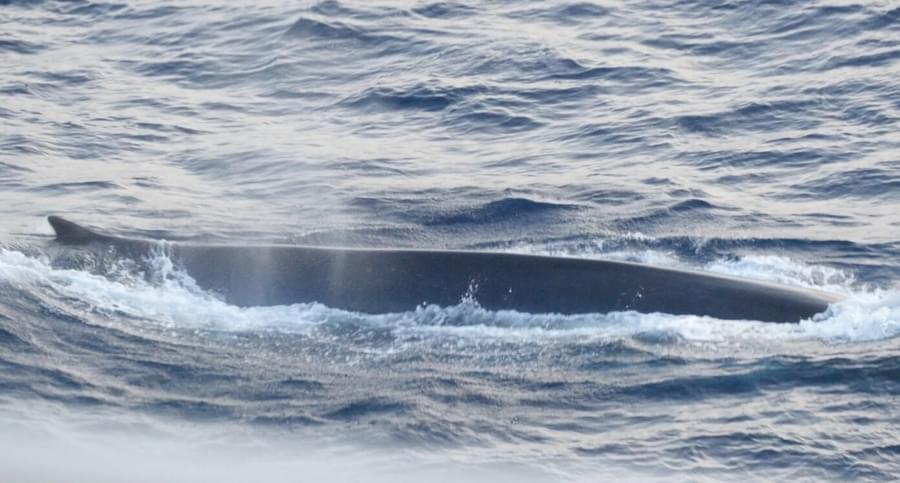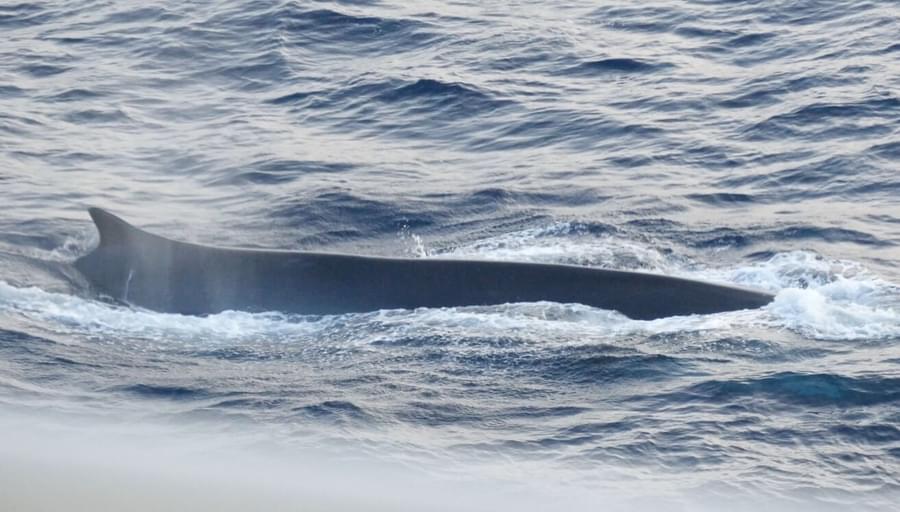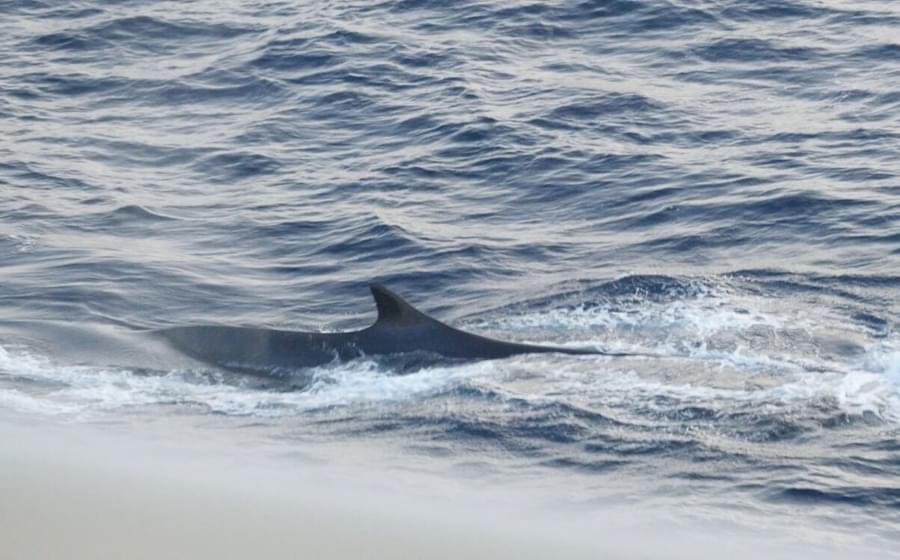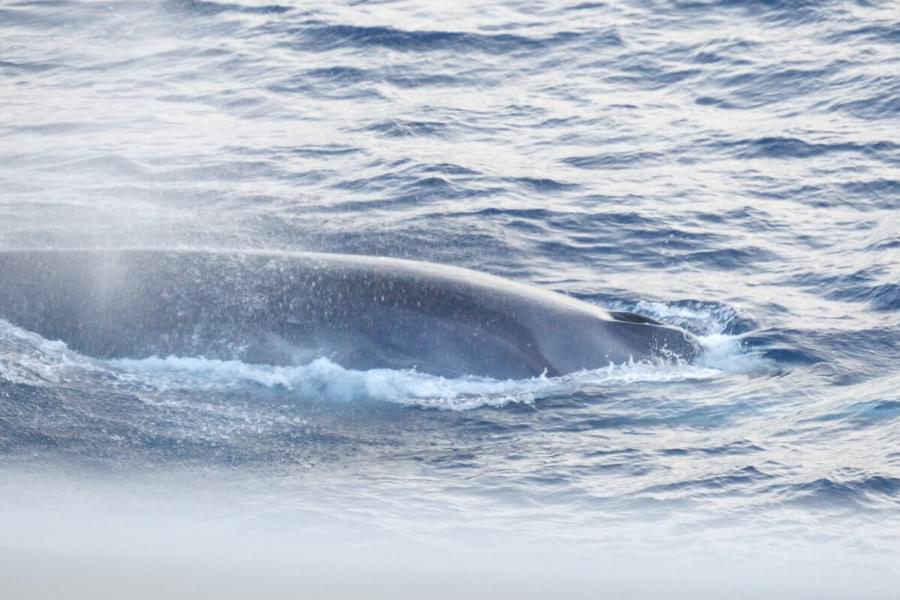It’s time for another update from Sasha De Jong, ORCA’s Research Scientist based on board the Brittany Ferries’ Galicia. Sasha is observing and recording whale behaviour and movements in relation to a large ferry travelling across the Bay of Biscay…
It has been a couple months since the last update on this exciting research project. During this time, I have had the pleasure of observing the diverse wildlife that can be found in the Bay of Biscay, from blue sharks and sunfish to the giants which this project revolves around: the fin whales.
After a relatively slow start to the season, it finally kicked off with a bang when we found ourselves surrounded by more than 15 fin whales on the 3rd of July. Why the arrival of the whales was delayed is not immediately clear but may have been indirectly related to the strange temperatures this summer. Throughout the season, sightings remained fairly consistent with up to 30 whale sightings on any given crossing.
With sighting numbers like that it was only a matter of time before some animals would end up close to the ship. Keeping this in mind, the most surprising thing I observed was the lack of a reaction by the whales to the ship. The whales seemed to go about their business without a care in the world, even with a 200m long vessel fast approaching. On the one hand this may indicate that they don’t feel disturbed by the presence of the ferries, on the other hand it is worrying because the ship will not always be able to avoid the whale in time.
On that note, a very positive part of this experience has been to see how the crew on the ship manages whale presence. Since I was always on the lookout, I was able to give warnings far ahead of a potential collision but, a number of times, it was the crew that spotted the animals whilst I was observing another animal through my binoculars. This was reassuring because it means that even whilst I am off the ship, the crew will continue to keep disturbances and casualties to a minimum.
As we approach the end of the season it is time to dig into the data and see what can be uncovered. With this, we can also start planning the next steps in this project and what improvements or adjustments can be made.




